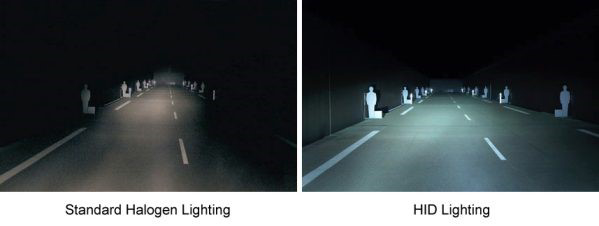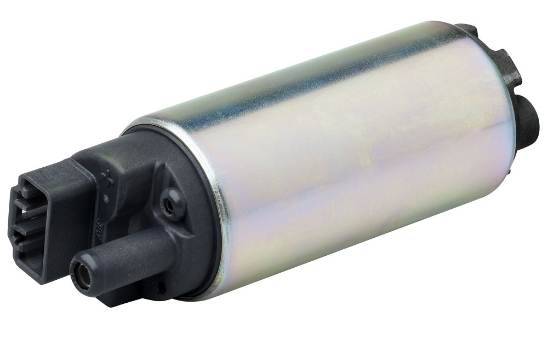Headlights, they are an important aspect of everyday driving. From driving at night, during fog, during storms, or even in broad day light. We’ve come a long way since the first halogen light-bulb was introduced to the common automobile.
High Intensity Discharage (HID) lighting replaces the filament of a light bul with a capsule of gas. The light emanates an arc discharge between two closely electrodes. This discharge is hermetically sealed inside a samll quartz glass tubular capsule. HID lights require a ballast, whiach carefully regulates the voltage supplied to the capsule of gas. The amount of light produced is greater than a standard halogen bulb while sonsuming less power, this light more closely approximates the color temperature of natural daylight.

High-intensity discharge lamps (HID) produce light with an electric arc rather than a glowing filament. The high intensity of the arc comes from metallic salts that are vapourised within the arc chamber. These lamps are formally known as gas-discharge burners,[by whom?] and have a higher efficacy than tungsten lamps. Because of the increased amounts of light available from HID burners relative to halogen bulbs, HID headlamps producing a given beam pattern can be made smaller than halogen headlamps producing a comparable beam pattern. Alternatively, the larger size can be retained, in which case the xenon headlamp can produce a more robust beam pattern.[original research?]
Automotive HID may be called "xenon headlamps", though they are actually metal-halide lamps that contain xenon gas. The xenon gas allows the lamps to produce minimally adequate light immediately upon start, and shortens the run-up time.
The correlated colour temperature of factory installed automotive HID headlamps is between 4100K and 5000K[c
Some new cars on the market come equipped with the brighter HID xenon lights. However, if your vehicle lacks this hand feature, an HID conversion kit is available for most makes and models. HID conversion kits are your ticket to brighter lights which means better visibility and safer driving conditions.
Normal car lights are halogen, but a popular choice is a xenon HID conversion kit. HID stands for high intensity discharge. HID kits produce far brighter lights while using even less energy than traditional halogen bulbs. Even if your car came with traditional halogen bulbs, xenon HID conversion kits allow virtually any vehicle to convert to improved lighting with minimal work. Some provide HID output for high and low beams while some only work for one level of lighting. They are available in a range of colors and anywhere from 35 watts to 90 watts! You’ll need to know the wattage necessary for your particular vehicle.
Not only are brighter lights sometimes safer, they also improve the look of your vehicle at night. 5000K or 6000K (white and crystal white) are the most popular colors, but the lights honestly come in a vast variety of colors from pink to blue to yellow. However, your specific light purpose and driving condition may dictate the color of light your choice. Yellow lights are better in foggy conditions. The ultra-bright white lights can hinder your visibility in foggy conditions. Those ultra-bright lights do illuminate the most road ahead, so they can be especially helpful in dark driving conditions.

